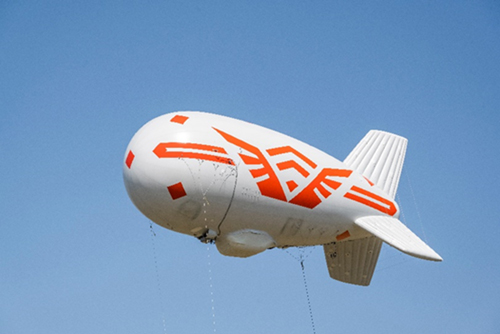SoftBank Corp. (hereinafter “SoftBank”) has jointly developed a high-altitude tethered balloon base station equipped with a cylindrical multi-element phased array antenna, the “cylinder antenna” (Note 1), which realizes fixed footprint, with US-based Altaeros Energies, Inc. (hereinafter “Altaeros”), a company invested in by SoftBank Group Corp. In May 2022, a demonstration experiment was conducted at the Multipurpose Aviation Park in Daikicho, Hokkaido, successfully achieving a wide and stable communication area. This footprint fixation technology (Note 2) is being researched and developed by SoftBank and HAPS Mobile Inc. (hereinafter “HAPS Mobile”) to build a stable communication area (footprint) in the “HAPS (High Altitude Platform Station)” platform, which provides communication networks from the stratosphere.

SoftBank has been working on the development and practical application of wireless relay systems utilizing tethered balloons for purposes such as restoring communication areas during disasters. This time, the development of a high-altitude tethered balloon base station, combining the newly developed footprint fixation technology and Altaeros’ high-altitude tethered balloon “ST-Flex” (Note 3), has enabled the tethering of balloons at higher altitudes than before and the installation of heavier payloads (communication equipment).
In communication platforms like HAPS in the sky, aircraft equipped with wireless base stations provide communication services to the ground while circling. However, there is a challenge of unstable communication quality, such as the reception level due to the movement of the communication area formed on the ground by the aircraft’s circling, causing handovers (Note 4). The footprint fixation technology developed by SoftBank and HAPS Mobile, which is the world’s first, solves this issue by dynamically controlling the direction of radio waves according to the aircraft’s circling using digital beamforming control (Note 5) with the “cylinder antenna,” which is an essential technology for providing communication networks from the sky.
Features of the newly developed high-altitude tethered balloon base station
- Stable tethering of the balloon at a maximum altitude of 305m (Note 6) is achieved by controlling three tethering ropes (ropes) with AI (Artificial Intelligence).
- Capable of carrying a payload (communication equipment) of up to 60kg.
- By tethering at a maximum altitude of 305m, a wider communication area is realized compared to conventional methods.
- The footprint fixation technology enables a stable communication area that is not affected by the movement, rotation, or swaying of the balloon.
- Reduction of operating personnel through an autopilot system.
In the demonstration experiment conducted at the Multipurpose Aviation Park in Daikicho, Hokkaido, a communication test was conducted by tethering the “ST-Flex” at an altitude of 249m, and it was confirmed that a wide communication area can be secured at a maximum distance of several tens of kilometers (Note 7) in environments with good visibility. In addition, it was confirmed that even when the attitude and position of the tethered balloon base station change depending on the wind speed and direction, handovers do not occur on mobile devices, fluctuations in reception levels are suppressed, and stable communication is possible.
SoftBank will consider utilizing the know-how and data obtained through this demonstration experiment for the restoration of communication areas during disasters and the construction of HAPS communication platforms in the future.
[Notes]
- For details, please refer to SoftBank’s announcement dated September 2, 2021, “Efforts to achieve stable communication areas and network construction for the commercialization of the stratospheric communication platform (HAPS).”
- This is a technology that fixes the communication area (footprint) of each cell formed on the ground by the radio waves from the communication equipment mounted on the aircraft by changing the direction of the radio waves according to the rotation of the aircraft.
- For details on Altaeros’ “ST-Flex”, please see here (opens in a separate window).
- The action of switching the connected cell of a mobile device to another cell.
- This technology involves controlling the amplitude and phase of transmitted and received signals digitally to concentrate radio waves in a specific direction for transmission and reception.
- In the demonstration experiment, the balloon is tethered at an altitude of 249m.
- The distance between the tethered balloon base station and the mobile device.
